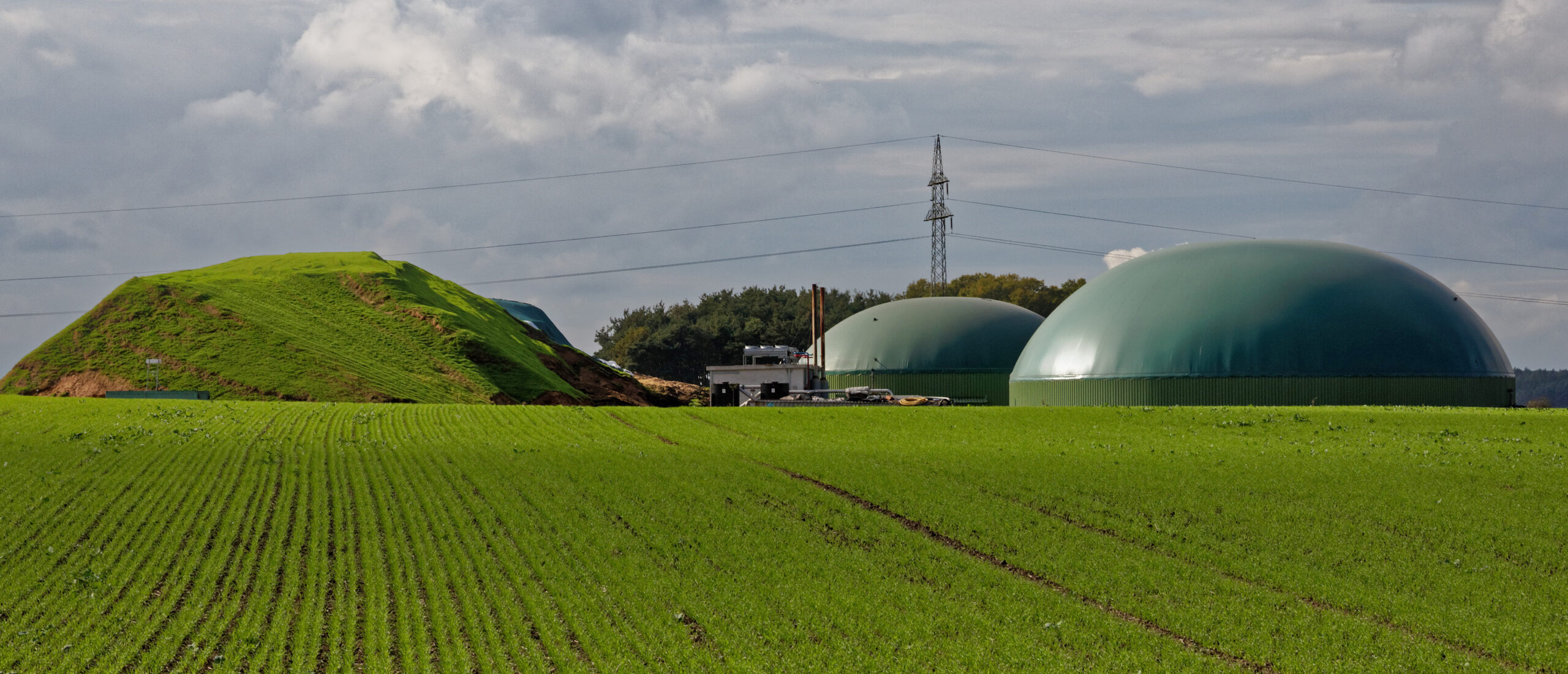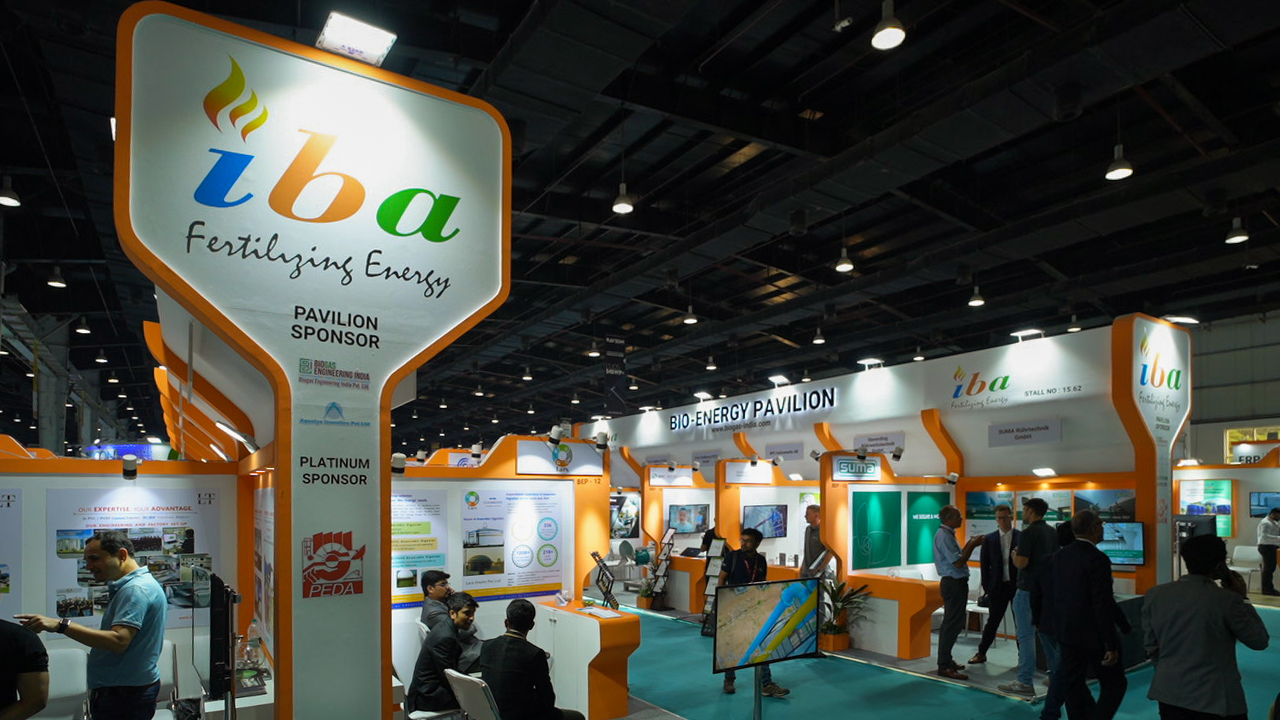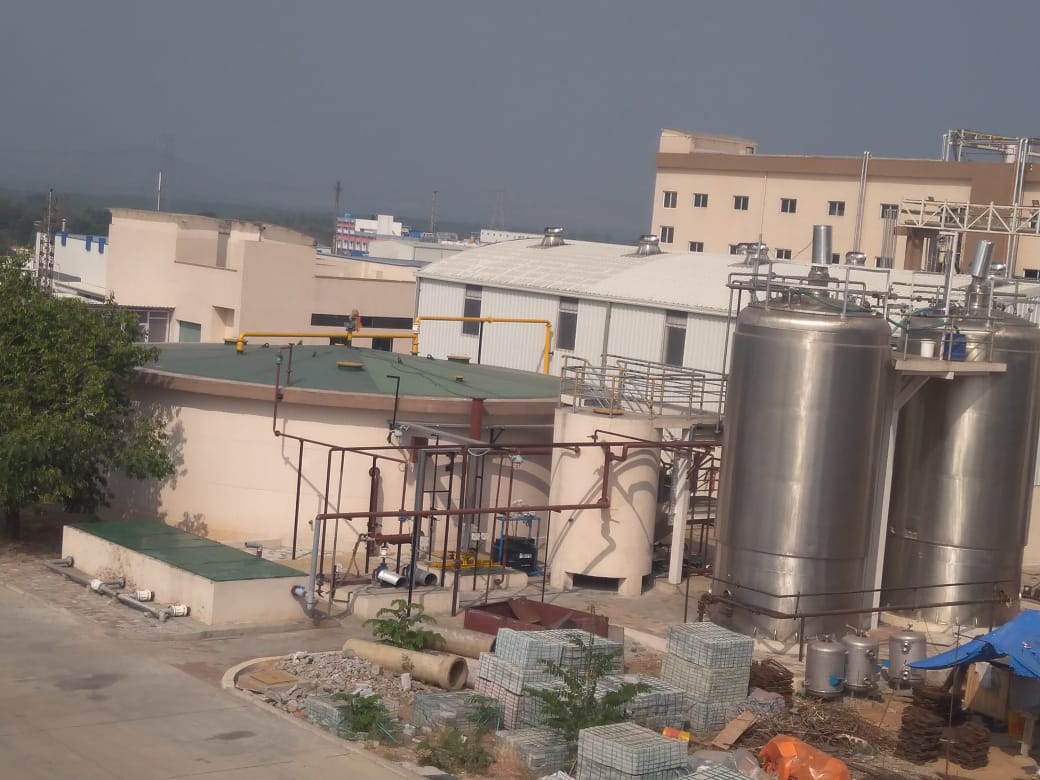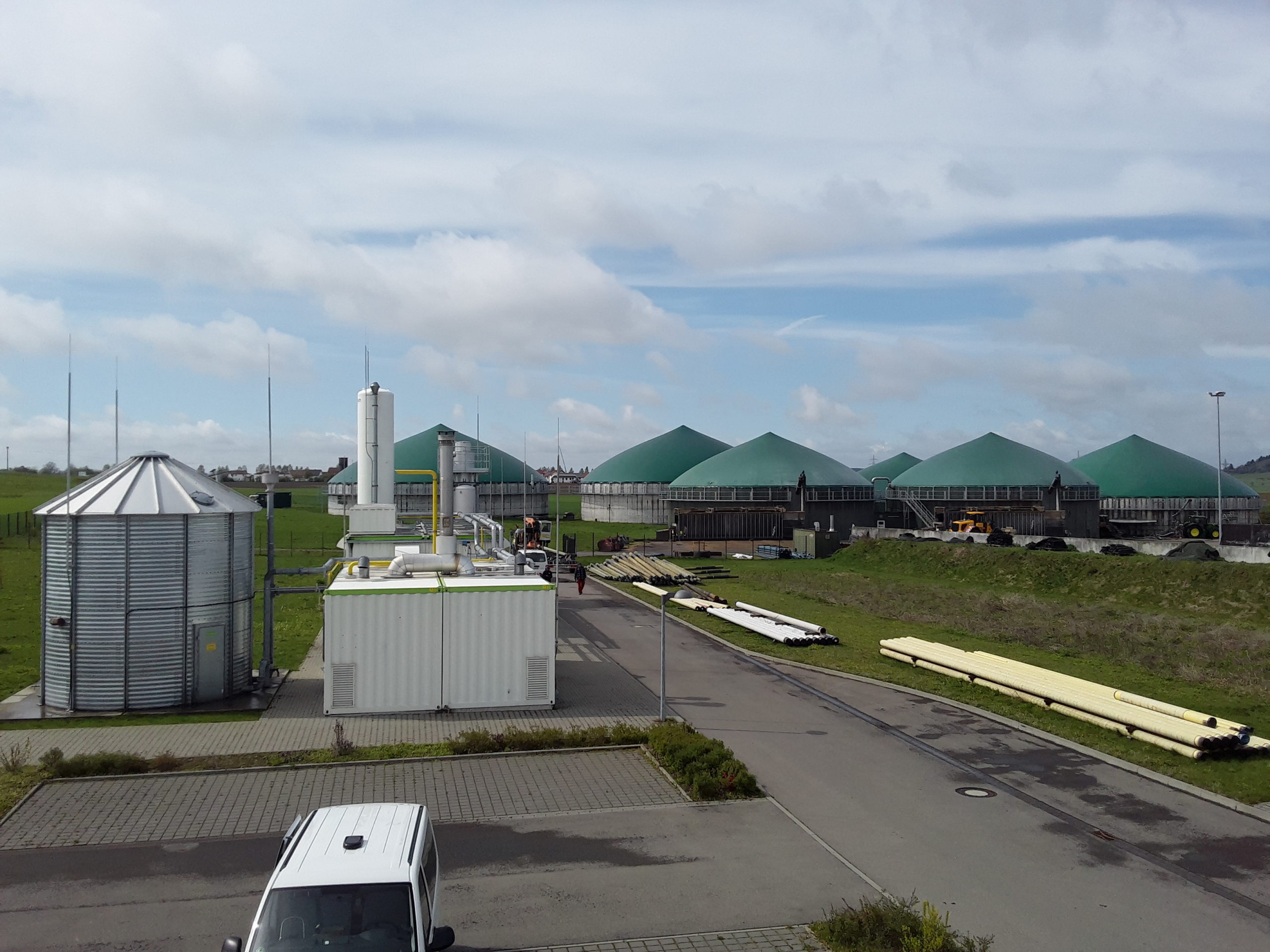Biogas plants have been available in India for several decades. As an interesting fact, Biogas – a globally accepted clean fuel, actually finds its origin in India and was discovered in the mid-eighteenth century and gradually emerged as the technology of choice for bridging the energy deficit situation in rural hinterlands. However, over the last decade, it has evolved to encompass a wider role from Waste to Energy perspective too.
In other words, the biogas technology that was earlier put to use for essentially treating cow dung anaerobically as a substrate; the scope has now widened to treat other organics like municipal solid waste [organic fraction], food & vegetable waste, agro-harvest residues, and industrial wastes from the slaughterhouse, diary residue, food processing units, and so on. Indeed, the change towards treating a wider array of feedstocks in contemporary scenarios has occurred with a lot of modifications in the production methods. It now incorporates various technologies for pre-treatment of feedstock, a wide array of technology for digestion, purification and upgradation, and efficient utilisation of biogas or its upgraded forms. Not to be forgotten, various technologies pertaining to the recovery of by-products such as organic manure, Carbon Dioxide are becoming more common in upcoming biogas/biomethane projects. Furthermore, it’s worthwhile to note that contemporary technologies are ephemeral in nature and are continuously evolving in pursuit to improve the efficacy and yields from plants.
Nevertheless, in global comparison, the present biogas advancement of India is moving at a relatively slow pace in terms of the rate of technology adaptation and its widespread acceptability as a business case. Among many reasons, one crucial aspect for slow adaptation rate is the absence of a level playing field, in form of standards, for participants in the biogas ecosystem. A survey by the Indian Biogas Association amongst its members, representing the entire spectrum of the biogas value chain, clearly reinstates this fact. Over ninety percent of the surveyed participants strongly considered that the unavailability of standards in the biogas/bio-CNG industry is the major deterrent for the non-realization of the industry’s true potential. Furthermore, out of the survey, few predefined sub-areas/domains with a need for standardization were identified. Participants were asked to earmark the sub-areas/domains, lack of whose standardization, jeopardizes their business opportunity in the industry. The obtained survey results are graphically portrayed underneath:

Clearly, considering the survey participants’ response to be the representative sample of stakeholders in the biogas industry, the above plot shows the wider consent for a need towards standardization across all these identified domains. As depicted, the majority agreed that defined and documented set of rules, in form of standards, should be available in areas such as- terminologies & definitions, specification of the product, process, Occupation, Safety and Health (OSH), Emission norms, laws on end- usage of products, approvals and clearance processes, and handling of waste (feedstock to biogas plants). Availability of standards in these identified domains shall provide uniformity, which amongst many others shall accrue the following crucial benefits:
- Allow worldwide acceptance of Indian Market for application of the product, process, or equipment,
- Removal of technical barriers with swift technology transfer,
- Promote quality use of biogas, its upgraded form, and related equipment, and also augment the R&D space,
- Providing uniform guidelines for approving regulatory authorities and sanctioning of the permissions, and
- Facilitating unequivocal regimes thus ensuring hassle-free compliance to the legal requirement.
The benefits shall ultimately lead to improved transparency in the ecosystem, gain in promoter’s confidence, and steeper economic growth for the industry. Exploring further, within this context, into the existing set of standards encompassing the Indian biogas/ biomethane ecosystem, which can be segmented as per different recognized scales of biogas plants by MNRE, which is the central coordinating ministry for biogas- the following could be seen.
Small-scale biogas plants
Courtesy, the Government’s initiative, India is currently running one of the most diverse and biggest renewable energy programmes pertaining to small scale (household-based biogas plants) known as the NNBOMP (New National Biogas and Organic Manure Program). Since the early twentieth century, MNRE has fine-tuned the program and rationalised the related subsidy scheme; by strengthening the institutional framework at the state and district level and devising the standard tender documents for calling bids for implementation of the set target. Certain biogas plant models (fixed dome type, and floating dome type), which are IS marked (meeting Standard code of practices from Indian Standards Institution commonly known as ISI as approved by BIS are recognised by the MNRE, and eligible for its subsidy scheme under the NNBOMP. Additionally, there are various other MNRE approved models under fixed, floating, pre-fabricated, and bag type, which is also accepted for availing the subsidy under NNBOMP. Also, for safe, efficient, and economic utilization of the biogas obtained from biogas plants, IS specifications for biogas stoves and their spare parts need to be adhered upon. Such stoves are marked with an ISI mark. This applies across any scale of a biogas plant using the cooking stove for end usage of the cleaner fuel.
Medium-sized and Large-scale biogas plants
Under the biogas power generation (Off-Grid) and thermal application program of MNRE, decentralized power generation plants (3-250 KW) and also for equivalent thermal/cooling capacity applications are promoted. In order to be applicable for a subsidy, the implementation guideline from MNRE cites that equipment needed in biogas plants such as engines, generator sets, gas scrubbers, energy meters, flow meters, etc. wherever applicable should conform to standards brought by BIS and ISO. However, as on date, there aren’t any concrete standards published by BIS pertaining to the same. Furthermore, the guideline also cites that the included equipment in the project should meet all the requirements of Pollution Control Boards including Water and Air Pollution (Prevention and Control) Acts and Noise Pollution Act.
Then, for the larger-scale projects under MNRE’s program on Waste to Energy from urban, industrial, agricultural Residues, and MSW, there isn’t any eligibility criterion on technology selection. Within this programme, biomethanation is an accepted technology type but, there isn’t any particularly mentioned specification or standards, which the biomethanation technology needs to comply upon. However, the produced bio-CNG (enriched biogas) should meet the specification for biomethane as per the available BIS standard. Also, storage of the produced biomethane at higher pressure in cascades is typically done to increase the stored energy density and related economical transportation; the vessels used to store and transport should meet the standards prescribed by the Petroleum Explosive and Safety Organization (PESO) under the Ministry of Commerce and Industry (MoCI)”
Now looking into the involvement of other Ministries, the Ministry of Petroleum and Natural Gas (MoPNG), in particular, is now deeply entrenched in the biogas ecosystem, through its Biofuel Policy 2018. The policy talks about the increasing usage of biofuels in the energy and transportation sectors of the country during the coming decade. It aims to utilize, develop, and promote domestic feedstock and its utilization for the production of biofuels thereby increasingly substitute fossil fuels in a sustainable way. However, the policy doesn’t mention compliance to any particular standards. May be in due course, easy access to existing Natural Gas Grid infrastructure and insertion of biomethane into the grid will call for few relevant standards to be set by the Petroleum and Natural Gas Regulatory Board (PNGRB), a body under the MoPNG.
Likewise, several other ministries have their set of frameworks which has a role to play in the biogas/ bio-CNG ecosystem. For instance, the Department of Fertilizer under the Ministry of Agriculture and Farmer Welfare (MoAFW) has incorporated necessary standards in the Fertilizer Control Order (FCO) to recognise bio-slurry, a by-product from biogas/ bio-CNG plant, as an organic fertilizer. Presently in FCO, forms of organic fertilizer that get recognition are Vermicompost, City compost, Organic Manure, bio-enriched organic manure, and the phosphate-rich organic manure (PROM). Also, the Ministry of Road Transport and Highways (MoRTH) has amended the Central Motor Vehicles Rules, 1989 and included the provisions for usage of upgraded biogas, in the form of bio-CNG, in motor vehicles, provided its meeting the fuel specification as per the prescribed specification of biomethane from BIS. Under the Environment protection initiatives, the Ministry of Environment, Forest and Climate Change (MoEFCC) has notified the revised Solid Waste Management SWM Rules, 2016, which are to be considered as guidelines but, not exactly standards.
It’s quite clear that there are several Ministries involved in this industry. But, the non-harmonised nature of the frameworks from individual Ministries has always led to the inadequacy of required support to the industry. So, this leads us to one of the major challenges in attempting to formulate standards on the aforementioned sub-areas/domains. That, it’s not at all easy to comprehensively look into all the different existing regulatory frameworks from numerous Ministries and other authorities, which more often do not tend to crisscross into each other.
In the journey towards formulating standards, the best way to go about is, to begin with taking cues from worldwide available standards on biogas. The ISO committee is already working in tandem with many other countries on developing and further fine-tuning of these worldwide minimum required standards. Now, with this as the starting dot and keeping cognizance of the specifics of inter-ministerial regulatory frameworks, the onward course of standard formulation across identified sub-areas/domains can be carried out. The process may include the formation of working groups (WG) across each identified sub-area/domain, conducting organizing focused group discussions- ensuring adequate representation of inter-ministry officials in each WG, followed by drafting of standards. As a more holistic approach, a detailed value chain analysis of the biogas industry should be carried out and regulatory/ legal frameworks relevant to each block of the value chain should be assessed. This will lead to the identification of the existing Inter-Ministerial frameworks influencing the biogas ecosystem. In other words, harmonization of formulated standards with existing inter-ministerial frameworks is extremely essential for its wider acceptance.
While it remains imperative that standards across domains should be formed at the earliest in the best interest of the development of the biogas industry in India. However, forming standards in itself shall not be enough. We have already seen the instance of an inappropriate implementation of the highly promising RPO/REC regime lead to numerous circumspect investors now averse to foray into prospective renewable projects. Several earlier installed renewable projects, both in the solar and non-solar category, which were built on the premise of this regime have suffered abysmally due to its inadequate implementation. Thus, along with the formulation of appropriate standards; structuring an adept monitoring body for testing its “on the ground” acceptability and implementation, and periodic revisions to ascertain that it meets the contemporary requirement, are also quintessential for the success of the industry in the long-term.





2 Comments
The article was amazing and gave really insightful values on the current trend of biogas generation in India. I have a few questions relating to a business venture idea of directing biogas-digestor towards urban households individually with aesthetic characters, easy to handle and, automated. How do you think this idea would fare in India, will it be profitable enough to venture internationally and also will this business be considered part of the NNBOMP subsidies?
Sir,I want insall 4cub meter biogas plant. Is going to run on cow dung.
Please support if any schemes applicable.
I am from Prakasam dist. Andhra Pradesh.
9959966030